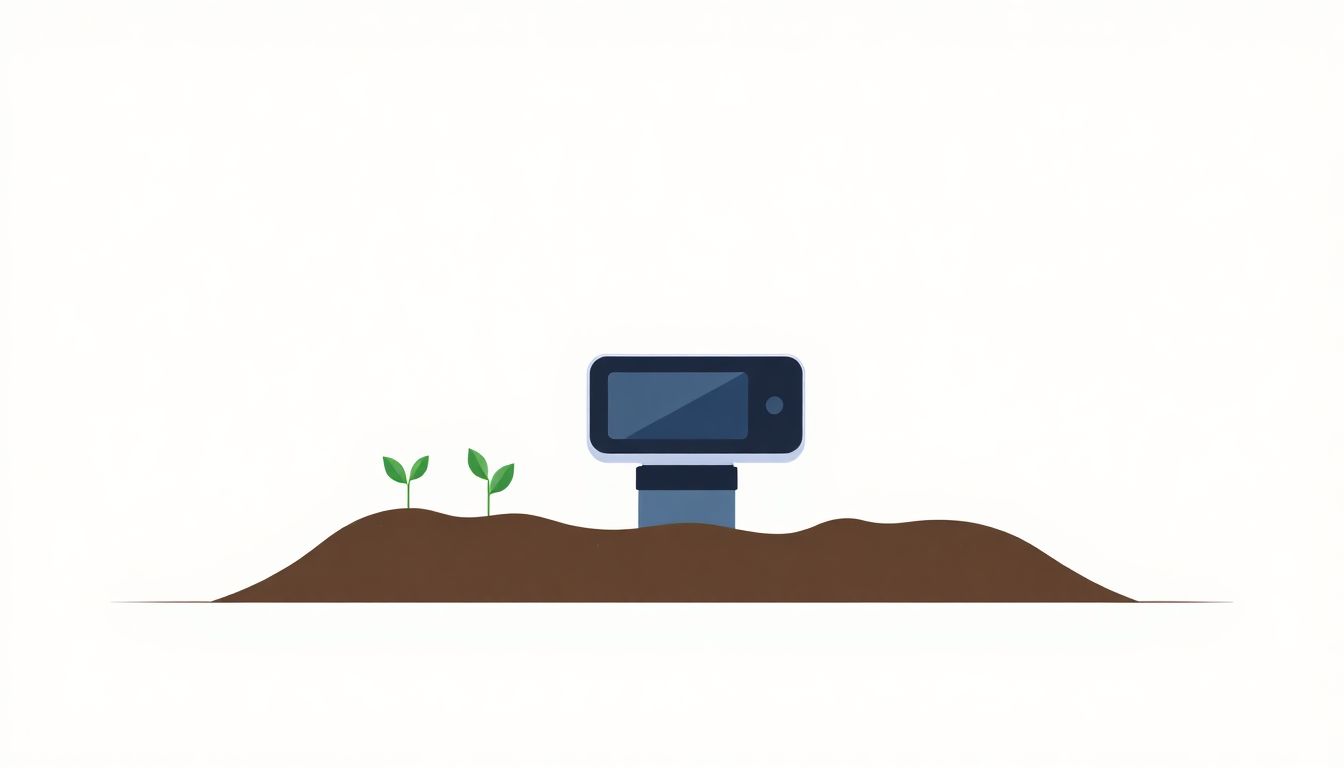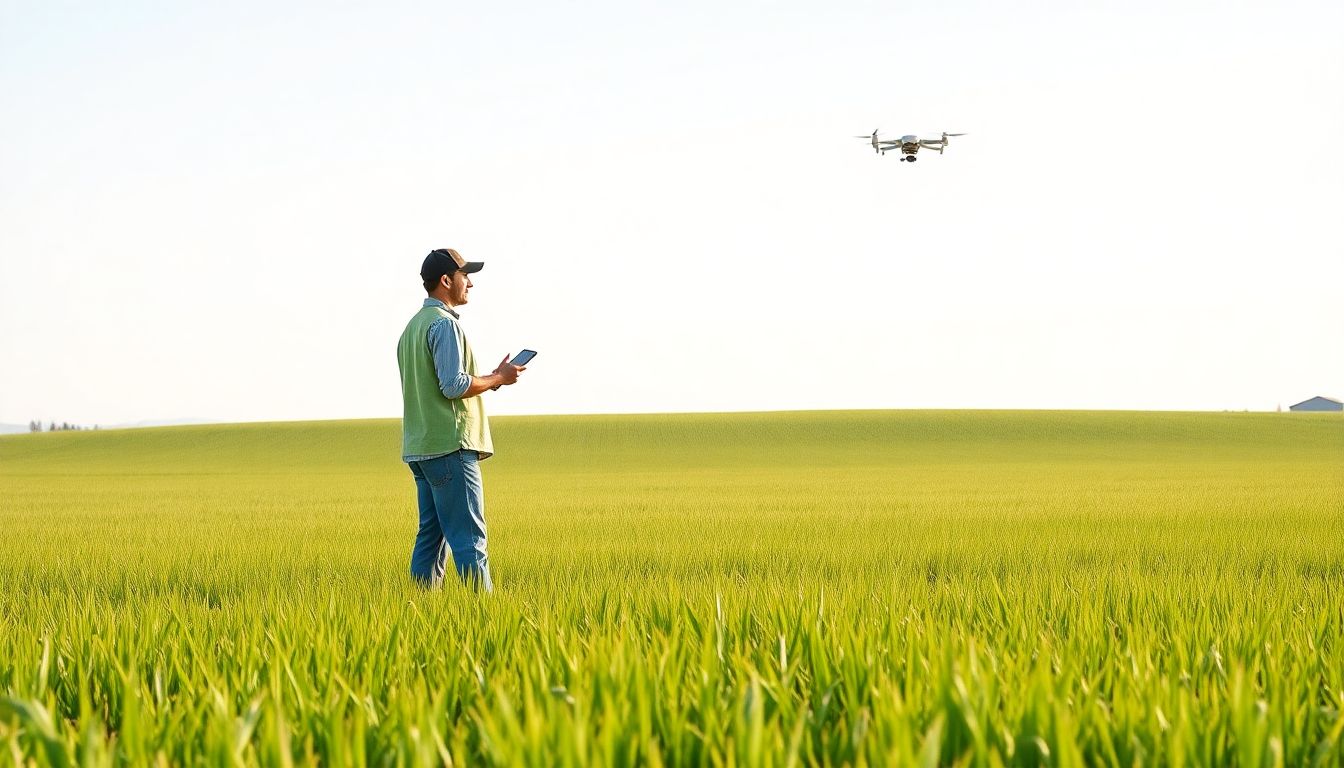You know how tough soil testing can sometimes be—slow, messy, and not very accurate? That’s where AI soil analysis tools come in, promising faster and more precise results. If you keep reading, you’ll see how these smart tools are changing the game and helping farmers and land managers make better decisions.
In this quick look, I’ll share the top AI tools available today, how they work, and why they’re making soil testing simpler and more effective. Plus, I’ll give you a sneak peek into the latest trends and tips to get the most out of these tech-savvy soil buddies.
Key Takeaways
Key Takeaways
- AI soil analysis tools deliver fast, accurate data in minutes using sensors, satellite images, and spectral analysis. They replace slow lab tests, helping farmers act quickly and prevent mistakes.
- Top tools like autonomous robots, spectral imaging, and integrated farm management systems are making soil testing easier and more reliable in 2025. They interpret complex data for better decisions.
- AI shifts soil testing from a one-time task to continuous monitoring, allowing real-time updates on soil health. This helps farmers react faster and maintains healthy soil over time.
- Using AI tools saves time and money by providing instant insights, reducing unnecessary fertilizer use, and preventing crop losses through early detection of issues.
- Trends include more autonomous robots, detailed 3D mapping via drones, and user-friendly platforms. These innovations make soil data more accessible and predictive for future farming needs.
- Costs vary from affordable handheld sensors to expensive robotic systems. Start by choosing tools suited to your size and budget, and explore options with support and trial periods. Funding may be available locally.
- Better soil data from AI helps farmers make smarter choices on fertilization, watering, and field management, leading to healthier crops and more sustainable land use in 2025.

1. How AI Soil Analysis Tools Provide Quick and Accurate Soil Data in 2025
AI soil analysis tools have made it possible to get detailed soil information in a matter of minutes, not days.
They use sensors, satellite images, and spectral data to analyze soil health on the spot.
These tools combine machine learning algorithms with chemical and physical soil data to give precise nutrient and moisture levels instantly.
For example, portable AI-enabled soil analyzers can detect soil pH, organic matter, and nutrient deficiencies right in the field.
The growth of the AI-driven soil texture classification market, valued at over half a billion dollars in 2024 and expected to double by 2034, shows how vital quick, reliable data has become for modern farming.
These tools cut testing times from weeks to hours while improving accuracy, leading to better decision-making on the spot.
So, whether you’re testing for fertilization needs or soil conditions for planting, AI tools provide a fast, dependable snapshot of your soil’s status, helping prevent costly mistakes or delays.
2. Top AI Soil Analysis Tools Available in 2025 and How They Work
- Naïo Technologies’ autonomous soil robots are among the leaders, offering real-time soil health monitoring as they work across fields, collecting data on soil moisture and nutrient levels automatically.
- Spectrosense, a spectral imaging tool integrated with AI, scans soil surfaces from drones or satellites to classify soil types and detect deficiencies, providing high-resolution maps in minutes.
- FarmLogs combines sensor data with AI to offer in-depth soil analysis, helping farmers plan fertilization and irrigation schedules more precisely.
These tools operate by combining sensor data, spectral imaging, and machine learning models to interpret complex soil information.
For instance, spectral analysis captures reflected light from the soil, which AI models then convert into nutrient or organic matter content.
On-site analyzers equipped with AI process chemical data rapidly to give immediate results, making the testing process faster and more reliable.
If you’re curious about the latest in soil analysis, exploring tools like these can help streamline your farming or land management practices.
3. How AI Changes Soil Testing from a One-Time Task to Continuous Monitoring
Traditionally, soil testing was a one-and-done process—sample, send to a lab, wait days or weeks for results.
But with AI, soil health monitoring becomes ongoing, almost like having a health tracker for your land.
Using IoT sensors and AI-powered robots, farmers can keep an eye on soil conditions in real-time, adjusting practices on the fly.
For example, portable AI devices can continuously measure moisture and nutrients, alerting you immediately if something’s off.
This constant stream of data helps avoid periods of poor soil health, reduces over-fertilization, and improves crop yields over time.
Plus, AI tools can analyze historical data to identify patterns, enabling smarter decisions for future planting seasons.
This shift from one-time testing to constant monitoring means you can react faster, save money, and keep your soil in better shape longer.

4. How AI Soil Analysis Tools Help Farmers and Land Managers Save Time and Money
Using AI soil analysis tools can really cut down on the hours and dollars spent on traditional testing.
Instead of waiting weeks for lab results, farmers get instant insights, which means they can make timely decisions.
For example, portable analyzers often cost a few hundred dollars but can save thousands in unnecessary fertilizer or water use.
Predictive models powered by AI can tell you exactly when and where to apply nutrients, preventing waste and boosting crop yields.
Plus, continuous monitoring means fewer surprise problems, so you dodge costly crop losses or soil remediation expenses.
Smart tools also help plan better crop rotations and field management, leading to long-term savings.
By integrating AI soil data into your farm management systems, you can spot issues early and adjust practices without unnecessary expenditures.
5. Trends and New Ideas in AI Soil Analysis for 2025 and Beyond
One big trend is the rise of AI-driven robotics, with more autonomous soil testers entering the scene in 2025.
These robots can roam fields daily, collecting data continuously without human intervention, ensuring up-to-date soil health info.
Another development is the growth of hyper-localized soil mapping via drone and satellite data, now in rapid 3D mapping formats.
Expect more tools to combine AI with environmental sensors that track not just soil but also atmospheric conditions influencing soil health.
Some companies are exploring AI models that predict soil changes over months or years, helping plan for future land use.
There’s also increased focus on user-friendly platforms that let farmers analyze complex data without needing a tech background.
Finally, collaborations between agritech firms and research institutions are driving innovation, like AI-enabled soil health diagnostics using machine learning algorithms trained on terabytes of data.
6. What It Costs to Use AI Soil Analysis Tools and How to Get Started
Prices vary widely—from handheld sensors costing a few hundred dollars to full-scale robotic systems reaching into the tens of thousands.
Most portable analyzers are affordable enough for small farms, while larger operations might consider investing in automated robots or satellite services.
To get started, consider your specific soil needs and pick a tool that matches your farm size and budget.
Look for options with good software support and data integration features—these make your analysis more useful.
Many companies offer demo periods or starter packs, so you can test the tools without a big upfront commitment.
Don’t forget to factor in training costs—getting familiar with new tech is key to making it work for you.
Finally, some government grants or agricultural subsidies may help offset initial costs, so check available programs in your area.
7. Why AI Soil Analysis Tools Are Turning Into Better Farming Decisions in 2025
With more accurate data from AI tools, farmers can make smarter choices in real-time rather than relying on guesswork.
For instance, AI models can suggest optimal fertilization schedules, reducing overuse and lowering costs.
They also help identify areas of the field that need extra attention, allowing targeted interventions instead of blanket treatments.
By tracking soil health trends over seasons, farmers see what practices lead to better outcomes—no more shooting in the dark.
This constant flow of insights means fewer crop failures and more consistent harvests.
In addition, AI predictions can help farmers plan for climate-related risks, such as drought or flood conditions, months ahead.
In the end, integrating AI into farm decision-making not only boosts productivity but also promotes more sustainable land use.
FAQs
AI soil analysis tools use advanced sensors and machine learning algorithms to process data rapidly, delivering precise soil health information within minutes. This speeds up decision-making processes for farmers and land managers.
Popular tools include IoT-based sensors and drone imaging powered by AI algorithms that assess soil nutrients and moisture levels. They interpret data automatically, providing clear insights for efficient soil management.
AI integrates sensors and data analysis to enable real-time soil monitoring, allowing ongoing assessments. This shift supports timely interventions and improved soil health management throughout crop cycles.
AI tools help optimize fertilizer use, improve crop yields, and reduce environmental impact. They provide quick, accurate data that supports better decision-making and efficient land management practices.